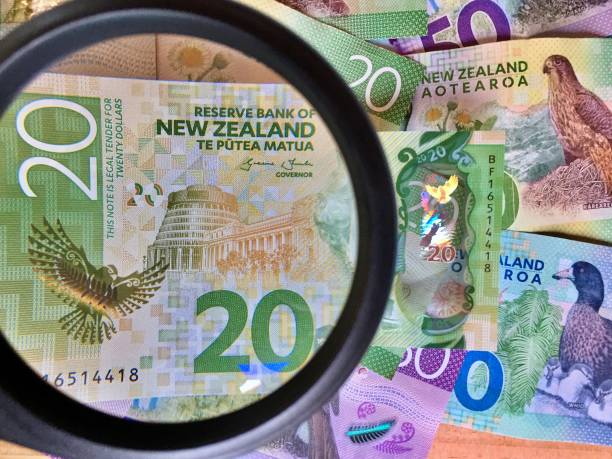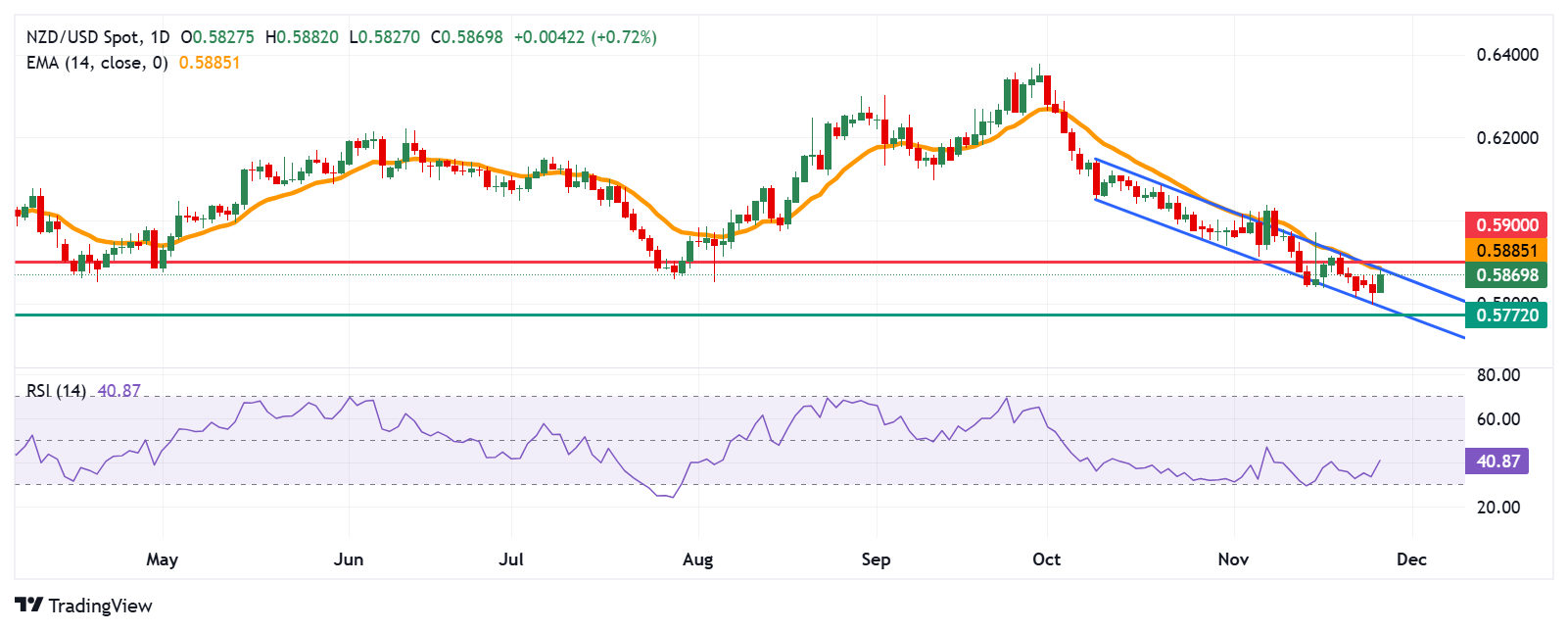
The New Zealand Dollar advanced as the RBNZ reduced its Official Cash Rate by 50 basis points in November.
The risk-sensitive NZD faced challenges as Donald Trump’s announced a plan of increase import tariffs on Chinese goods.
The USD struggles due to bond market optimism following President-elect Donald Trump's decision to nominate fund manager Scott Bessent.
The Zealand Dollar (NZD) breaks its five-day losing streak against the US Dollar (USD) following the Reserve Bank of New Zealand's (RBNZ) interest rate decision on Wednesday. The central bank announced a further cut to its Official Cash Rate (OCR), lowering it by 50 basis points (bps) from 4.75% to 4.25% in November.
The RBNZ justified this rate cut by citing a bleak economic outlook and a decline in inflation, which has now returned to the central bank's target range of 1% to 3%. Earlier this year, the central bank reduced the OCR by 25 bps in August and followed with a 50 bps reduction in October.
The NZD faced challenges due to weaker market sentiment, largely driven by President-elect Donald Trump's announcement of a 10% tariff increase on all Chinese goods entering the United States (US), as well as a 25% tariff on imports from Mexico and Canada. Since China is a significant trade partner for New Zealand, any economic disruption in China has a direct impact on New Zealand's economy.
New Zealand Dollar appreciates as US Dollar faces challenges due to bond market optimism
The USD faced pressure amid bond market optimism following President-elect Donald Trump's decision to nominate fund manager Scott Bessent, a seasoned Wall Street veteran and fiscal conservative, as US Treasury Secretary.
However, downside risks for the USD remain limited. Preliminary S&P Global US Purchasing Managers’ Index (PMI) data have bolstered expectations that the Federal Reserve might slow the pace of rate cuts. According to the CME FedWatch Tool, the probability of a quarter-point rate cut has dropped to 57.7%.
The latest Federal Open Market Committee's (FOMC) Meeting Minutes for the policy meeting held on November 7, indicated that policymakers are adopting a cautious stance on cutting interest rates, citing easing inflation and a robust labor market.
US President-elect Donald Trump is expected to appoint Jamieson Greer as the US Trade Representative, Bloomberg reported on Tuesday. Greer’s nomination highlights the central role of tariffs in Trump’s economic strategy.
On Tuesday, Chicago Fed President Austan Goolsbee indicated that the Fed is likely to continue lowering interest rates toward a neutral stance that neither stimulates nor restricts economic activity. Meanwhile, Minneapolis Fed President Neel Kashkari highlighted that it remains appropriate to consider another rate cut at the Fed’s December meeting, according to Bloomberg.
In November, S&P Global US Composite PMI climbed to 55.3, indicating the strongest growth in private sector activity since April 2022. Meanwhile, the US Services PMI rose to 57.0, up from 55.0, significantly surpassing market expectations of 55.2, marking the sharpest expansion in the services sector since March 2022.
New Zealand’s Gross Domestic Product (GDP) shrank by 0.2% in the second quarter (Q2), following a revised 0.1% growth in the previous quarter. Economists had anticipated a 0.4% contraction for the period, while the RBNZ forecasted a 0.5% decline.
NZ Stats showed on October 16 that New Zealand’s annual Consumer Price Index (CPI) rose 2.2% in Q3, aligning with market forecasts and marking a sharp slowdown from the 3.3% growth in Q2.
New Zealand Dollar tests the descending channel’s upper boundary near 0.5900
The NZD/USD pair trades near 0.5880 on Wednesday. A daily chart review highlights a deepening bearish trend as the pair moves within a descending channel pattern. Meanwhile, the 14-day Relative Strength Index (RSI) stays below 50, signaling persistent negative sentiment.
Regarding its support, the NZD/USD pair may navigate the region around the psychological level of 0.5800, which coincides with the lower boundary of the descending channel. A decisive break below this level would drive the pair toward its two-year low of 0.5772, last seen in November 2023.
On the upside, immediate resistance lies at the 14-day Exponential Moving Average (EMA) of 0.5886, which aligns with the upper boundary of the descending channel. A further barrier appears at the psychological level of 0.5900.
NZD/USD: Daily Chart
* The content presented above, whether from a third party or not, is considered as general advice only. This article should not be construed as containing investment advice, investment recommendations, an offer of or solicitation for any transactions in financial instruments.




